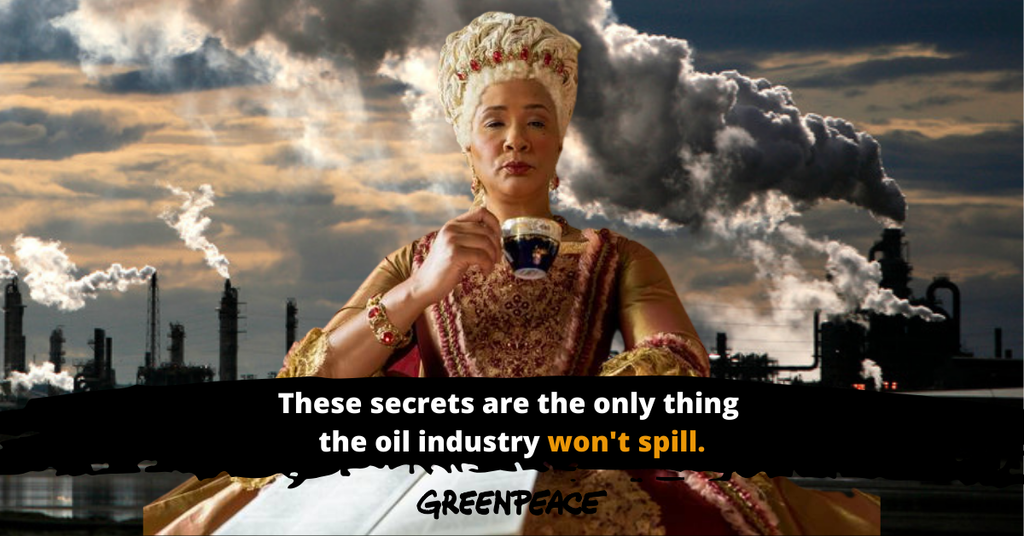
In this edition of Fossil Fuel Burning Questions, we’re going to talk here about regulatory capture, an administrative term that describes a situation in which a public regulatory institution, although intended to act in favor of the community, ends up serving commercial and/or private interests. It’s a kind of corruption. And that’s exactly what’s happening in the oil sands.
When representatives from Indigenous communities downstream from Imperial Oil’s leaking Kearl tar sands tailings ponds went to Ottawa to testify before a parliamentary committee, they spoke of their frustration with what they called “regulatory capture”:
“One of the clearest lessons from this crisis that grew is that it has reconfirmed the AER [Alberta Energy Regulatory] is a captured regulator that is simply not a trusted partner in protecting federal interests in our community. Living in an Indigenous community in the oil sands and downstream from it, I can tell you that it is appalling that Alberta has done so very little to manage the escalating growth and scale of these massive toxic ponds that seep into our natural environment and watersheds. This creates a risk to our way of life, to nationally important ecosystems, and to the well-being of Canadians.”
- Chief Billy Joe Tuccaro (Mikisew Cree First Nation)
So what is regulatory capture?
As the quote above makes clear, regulatory capture is when a government agency that is supposed to protect the public interest (from corporations looking to maximize profits and minimize their costs) instead comes to see its role as protecting the industry.
Imperial Oil wants us to believe that what is good for their bottom line is good for Alberta, even if this means not telling downstream communities about leaking toxic lakes.
The commonness of this phenomenon will probably come as a surprise to many Canadians who (quite reasonably) expect their government to put their interests above the interests of corporations and big-money establishments. This is especially important as we face a looming global climate crisis.
How does the industry ‘capture’ a regulator?
There are a lot of ways the industry can ‘capture’ their regulator.
- They can threaten to move somewhere else if they don’t get their way, taking jobs and tax dollars with them (though the oil isn’t going anywhere).
- They can set up a lucrative revolving door between industry, government and the regulator so there’s an ‘old boys club’ of people who know each other and think the same way. For example, the first Chairperson of the Alberta Energy Regulator was a long-time oil executive and founding President of the oil industry’s most powerful lobby group.
- They can finance political campaigns and lobby politicians to get the rules loosened. Or they can try to get clauses in trade agreements that allow companies to sue governments for lost profits if the regulator actually takes environmental protection seriously.
It is important to note that while these businesses have a lot of power, it is not absolute. Governments still have the ability to introduce policies that have the potential to strengthen their bargaining position against big business.
This is also where things begin to get murky.
Every government has agencies that are designed to regulate businesses and protect the public interest. These regulators vary from province to province and are tasked with being the watchdogs on fossil fuels companies. What often ends up happening, however, is the reverse. These regulators end up becoming spokespeople for these companies within the government. This phenomenon is what is referred to as regulatory capture.
“There isn’t trust with the regulator. We’ve said, as multiple communities have said, that this regulator is regulatory-captured.”
– Margaret Luker (Director, Sustainability, Fort McKay Métis Nation)
During that first day of testimony in Ottawa, Indigenous leaders talked about how regulatory capture shows how the agencies concerned are not defending the communities but defending the interest of companies.
“This issue, as has been mentioned, is a systematic issue. It’s not an issue of just asking, “How are you going to improve your communications protocol, because you should have communicated earlier?” This is a systematic issue that covers a range of areas, like how impact assessment is conducted, how the duty to consult is discharged, and how liabilities are managed in the energy sector, where you have this chronic and systematic regulatory capture. That’s the term, but it’s in the sense that the regulator is constantly pulling the direction of the conversation in the interests of the regulated parties rather than the public interest. The real question we need to get at here is what can be done to change this in Alberta because it is a chronic problem and it is one of the underlying issues we need to address. It is not just about changing Alberta or the AER’s communications protocol. It’s about how to build a regulator that is truly independent of the industry it’s regulating and is able to discharge the public interest and hold the public confidence.”
– Dr. Timothy Clark (Principal, Willow Springs Strategic Solutions, Fort McMurray Métis Local 1935)
This culture of regulatory capture is without a doubt a major barrier to climate action and environmental protection in Canada. Regulatory capture ensures that the creation and implementation of effective policies are either denied or delayed. It leaves citizens stuck with the same unresolved issues for years. Issues like environmental racism, in the case of the Imperial Oil leaking, are examples of how regulatory capture continues to permeate the various parts of our government system.
On the next edition of the Fossil Fuels Burning Questions blog series, we will explore what exactly Canadians can do about the issue of regulatory capture.
Till then,
Keep fighting the power of the fossil fuel industry.
